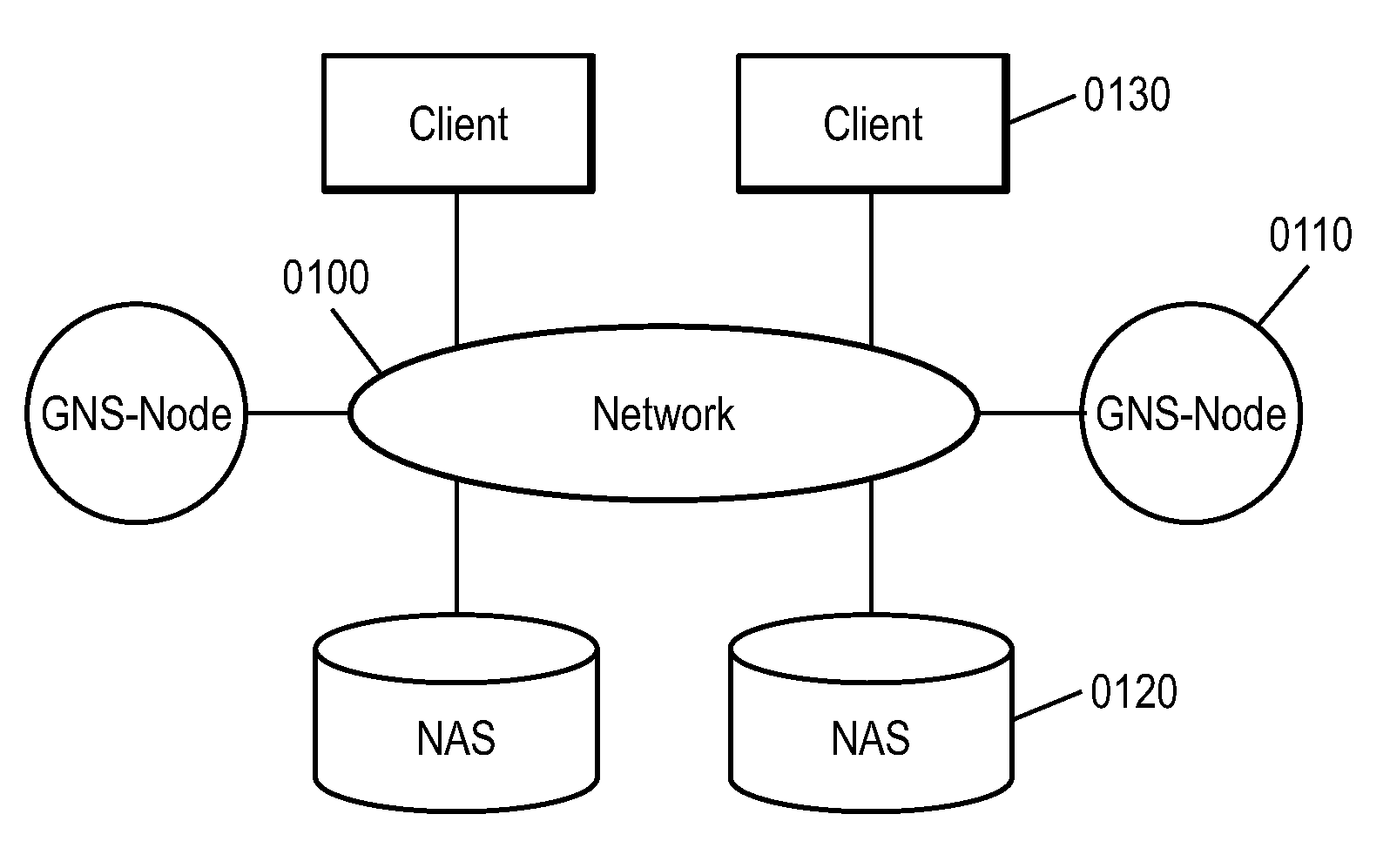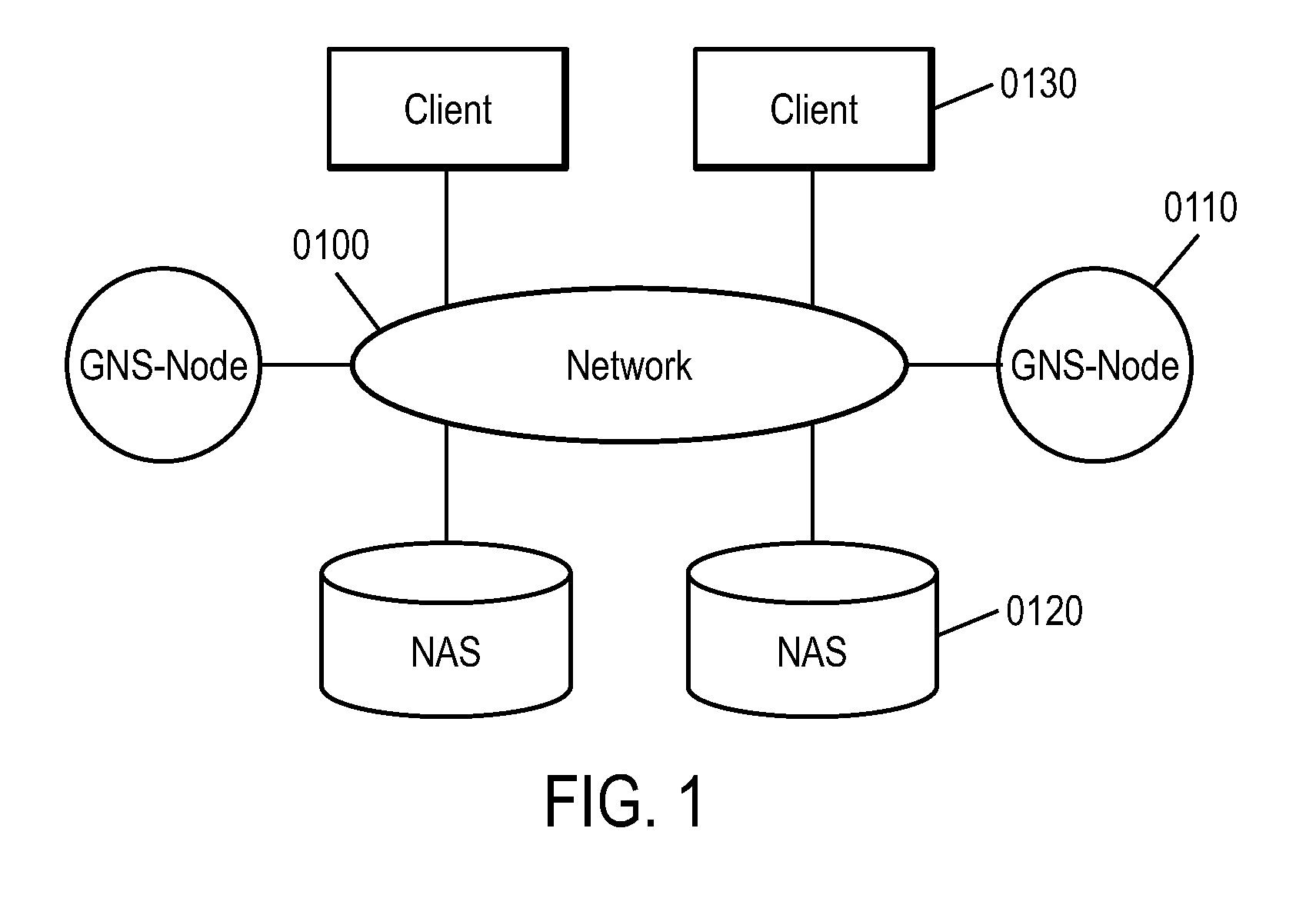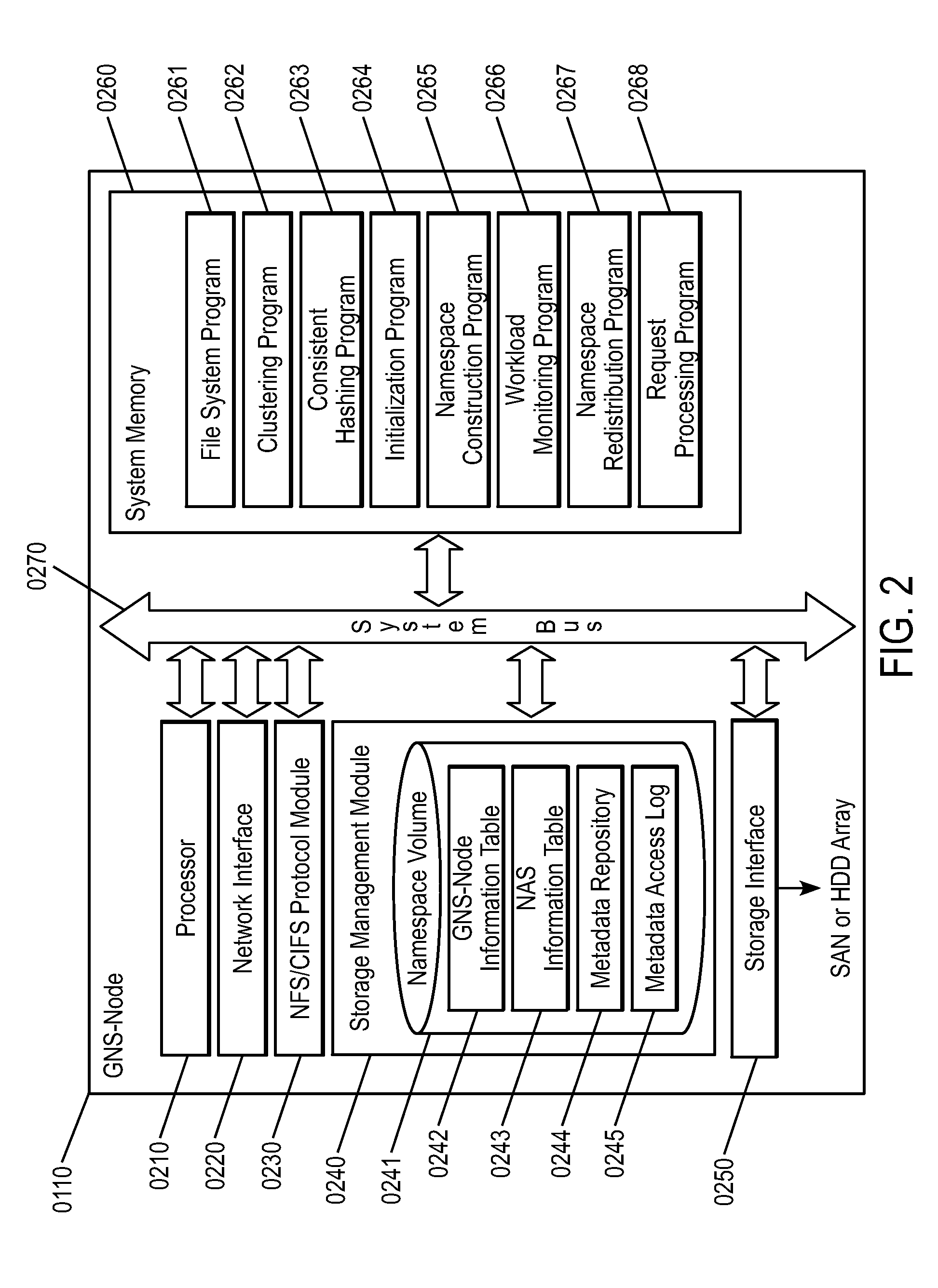Metadata management method for NAS global namespace design
a technology of global namespace and management method, which is applied in the field of metadata management method for nas global namespace design, can solve the problems of system administrators having to spend a great deal of time reconfiguring the system, system downtime and user interruption, and difficult management of storage and access to information stored therein
- Summary
- Abstract
- Description
- Claims
- Application Information
AI Technical Summary
Benefits of technology
Problems solved by technology
Method used
Image
Examples
Embodiment Construction
[0059]FIG. 1 is an exemplary diagram of an overall system. The system consists of multiple GNS-Nodes 0110, NAS devices 0120, and Clients 0130 connected to a Network 0100 (such as a local / wide area network). GNS-Nodes 0110 are dedicated metadata servers in this example, and manage the GNS namespace. NAS devices 0120 are heterogeneous NAS devices where user files are stored. Clients 0130 are devices (such as PCs) that utilize the Global Namespace service to access data in the system.
[0060]FIG. 2 is a block diagram illustrating components within a GNS-Node 0110. A GNS-Node may consist of, but is not limited to, a processor 0210, a network interface 0220, a NFS / CIFS (Network File System / Common Internet File System) protocol module 0230, a storage management module 0240, a storage interface 0250, a system memory 0260, and a system bus 0270. The system memory 0260 further includes a file system program 0261, a clustering program 0262, a consistent hashing program 0263, an initialization p...
PUM
 Login to View More
Login to View More Abstract
Description
Claims
Application Information
 Login to View More
Login to View More - R&D
- Intellectual Property
- Life Sciences
- Materials
- Tech Scout
- Unparalleled Data Quality
- Higher Quality Content
- 60% Fewer Hallucinations
Browse by: Latest US Patents, China's latest patents, Technical Efficacy Thesaurus, Application Domain, Technology Topic, Popular Technical Reports.
© 2025 PatSnap. All rights reserved.Legal|Privacy policy|Modern Slavery Act Transparency Statement|Sitemap|About US| Contact US: help@patsnap.com



